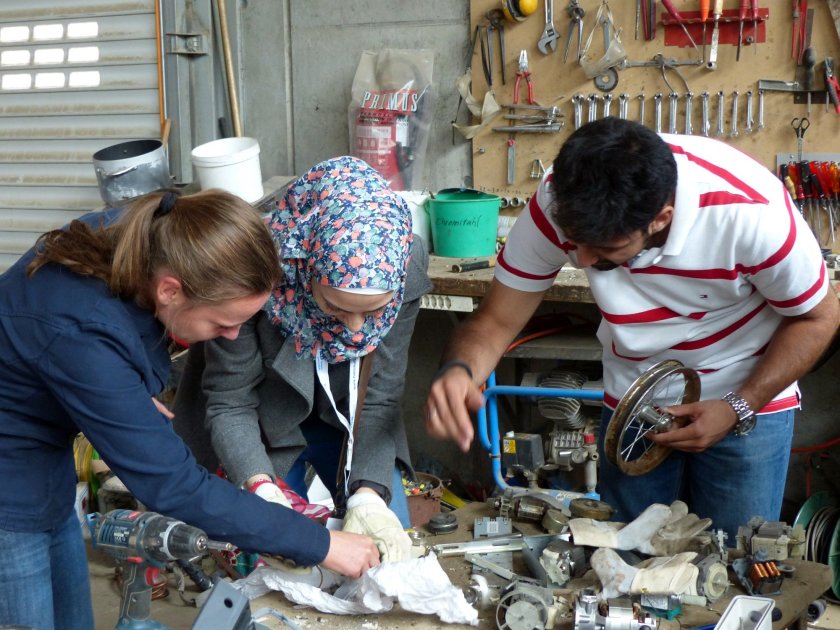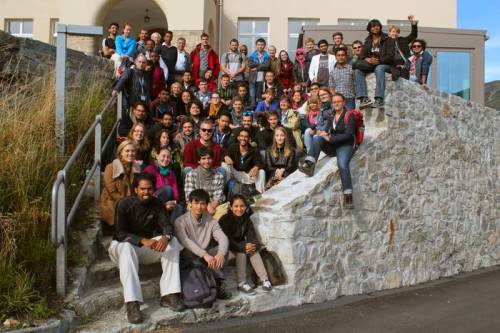Call for Applications open: International Summer University on Energy, Falera/Switzerland

Solar Solutions, hand made by the students. And they all work. © HZB

Group-picture from last year's ISU. © HZB
Excellent Master, Diploma, and PhD Students from all over the world from different disciplines are invited to participate in the international summer university ISUenergy2015. The ISUenergy2015 will take place from Aug. 23rd - Sept. 4th 2015 in Falera/Switzerland.
The interdisciplinary summer university focuses on solar energy under a multitude of perspectives: from the physics of photovoltaics and solar thermal energy to solar architecture and electromobility, smart grids and the economic and political aspects of renewable energy use. These topics will be treated in lectures, evening talks, practical workshops, and group projects.
This summer university is internationally established since 2009 and provides a unique setting for students to enrich their knowledge on energy topics. Splendid network opportunities among the students and with the lecturers will be offered.
More information on ISUenergy 2015 and FAQ:
http://www.helmholtz-berlin.de/events/isu-energy/
Applications are invited from March 1st , 2015: http://www.helmholtz-berlin.de/events/isu-energy/applications/
Early bird fee applications will be valid before May 15th, 2015.
Further questions: isue@helmholtz-berlin.de
arö
https://www.helmholtz-berlin.de/pubbin/news_seite?nid=14181;sprache=en
- Copy link
-
The twisted nanotubes that tell a story
In collaboration with scientists in Germany, EPFL researchers have demonstrated that the spiral geometry of tiny, twisted magnetic tubes can be leveraged to transmit data based on quasiparticles called magnons, rather than electrons.
-
Bright prospects for tin perovskite solar cells
Perovskite solar cells are widely regarded as the next generation photovoltaic technology. However, they are not yet stable enough in the long term for widespread commercial use. One reason for this is migrating ions, which cause degradation of the semiconducting material over time. A team from HZB and the University of Potsdam has now investigated the ion density in four different, widely used perovskite compounds and discovered significant differences. Tin perovskite semiconductors produced with an alternative solvent had a particular low ion density — only one tenth that of lead perovskite semiconductors. This suggests that tin-based perovskites could be used to make solar cells that are not only really environmentally friendly but also very stable.
-
Joint Kyiv Energy and Climate Lab goes live
Helmholtz-Zentrum Berlin and the National University of Kyiv-Mohyla Academy established on 27 November a Joint Energy and Climate Lab.
